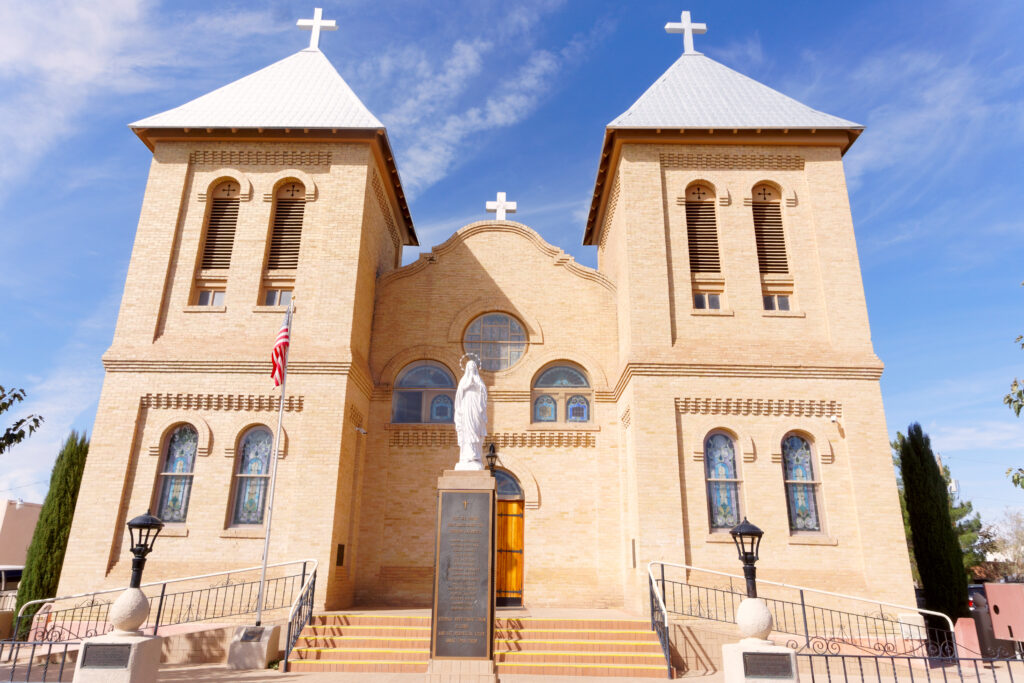
Las Cruces, a vibrant city in New Mexico, is home to a rich and diverse Catholic community. The city’s Catholic heritage dates back centuries. The roots of Catholicism in Las Cruces can be traced back to the arrival of Spanish missionaries in the 16th century. These missionaries spread Catholicism throughout the region and establishing the first Catholic church in the area. Their arrival marked a significant turning point in the religious landscape of Las Cruces and laid the foundation for a strong Catholic community that would endure for centuries to come.
Spanish missionaries were instrumental in spreading Catholicism throughout Las Cruces and surrounding areas. They built missions and churches, which served as centers for religious worship and community gatherings. These structures not only provided a place for Catholics to practice their faith but also became symbols of their identity and heritage. The influence of Spanish missionaries can still be seen today in the architecture and traditions that have been passed down through generations.
In the 19th century, Mexican-American settlers began to arrive in Las Cruces, bringing with them their own traditions and customs. These settlers integrated their cultural practices into Catholicism, creating a unique blend of Mexican-American and Catholic traditions. This fusion of cultures enriched the Catholic community in Las Cruces, adding a vibrant and diverse flavor to its religious practices. From vibrant processions to traditional music and dance, Mexican-American culture has left an indelible mark on the city’s Catholic community.
As the Catholic community in Las Cruces grew, so did the need for institutions to support its members. St. Genevieve’s Catholic Church, founded in the early years of the city’s history, became a cornerstone of the community. Alongside the church, Catholic schools and hospitals were established, providing education and healthcare to the growing population. These institutions not only served the Catholic community but also played a role in the overall development of Las Cruces.
The Vatican II Council, held from 1962 to 1965, brought significant changes to the Catholic Church worldwide, including Las Cruces. The council introduced reforms in liturgy and worship, encouraging greater participation from the laity and promoting a more inclusive and accessible approach to religious practices.
Throughout its history, the Catholic Church in Las Cruces has impacted social justice movements. From advocating for civil rights to supporting labor movements, the Catholic community has been at the forefront of fighting for equality and justice. Inspired by their faith, Catholics in Las Cruces have stood up for marginalized communities and worked towards creating a more just society.
Bishop James Peter Davis was a prominent figure in Las Cruces’ Catholic community. He dedicated his life to social justice causes, advocating for the rights of farmworkers and marginalized communities. His work left a lasting impact on the city and continues to inspire others to this day. Another notable figure is Sister Blandina Segale, who dedicated her life to aiding the poor and sick. Her selfless acts of compassion and service have become legendary in Las Cruces’ Catholic community.
Over time, the Catholic worship experience in Las Cruces has evolved, reflecting changes in music, art, and architecture. Traditional hymns have been supplemented with contemporary music, allowing for a more diverse and inclusive worship experience. Artistic expressions within the church have also evolved, incorporating cultural traditions and reflecting the unique identity of Las Cruces’ Catholic community.
Catholic art and architecture hold great significance in Las Cruces, serving as visual representations of faith and community. Notable examples include the stunning stained glass windows at St. Genevieve’s Catholic Church and the intricate murals that adorn its walls. These structures not only enhance the spiritual experience but also contribute to the city’s cultural identity, attracting visitors from near and far.
The Catholic community in Las Cruces has a rich history and culture that deserves to be explored and celebrated. From the arrival of Spanish missionaries to the integration of Mexican-American traditions, the establishment of key institutions, and the impact of prominent figures, the Catholic community has left an indelible mark on the city’s identity. As Las Cruces moves forward, it is essential to recognize and preserve this heritage, ensuring that the Catholic community continues to thrive and contribute to the city’s vibrant tapestry. By embracing its past, Las Cruces can build a future that honors its Catholic roots while embracing progress and inclusivity.